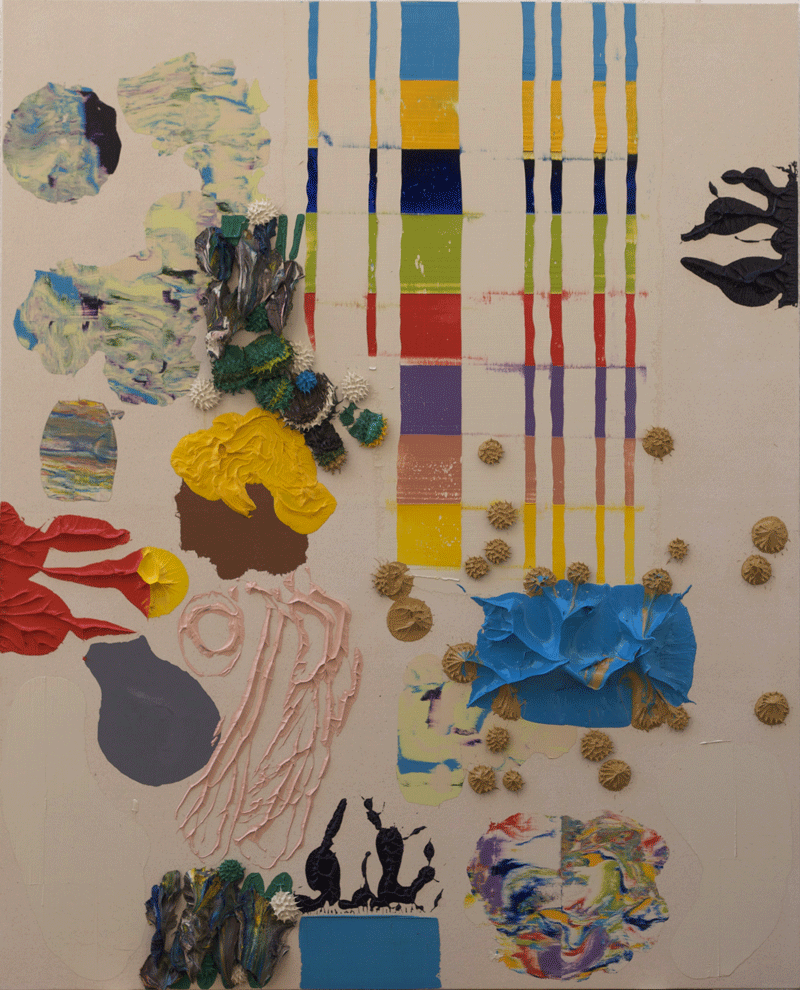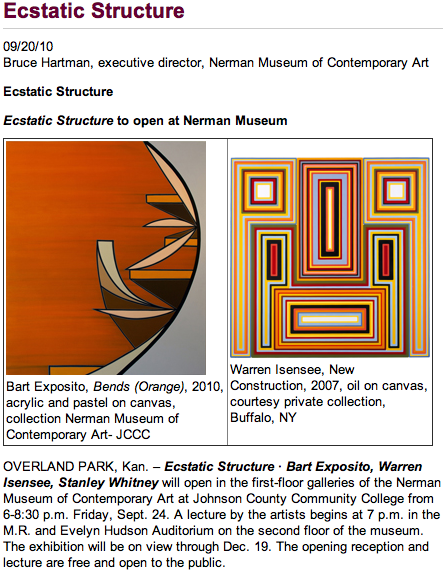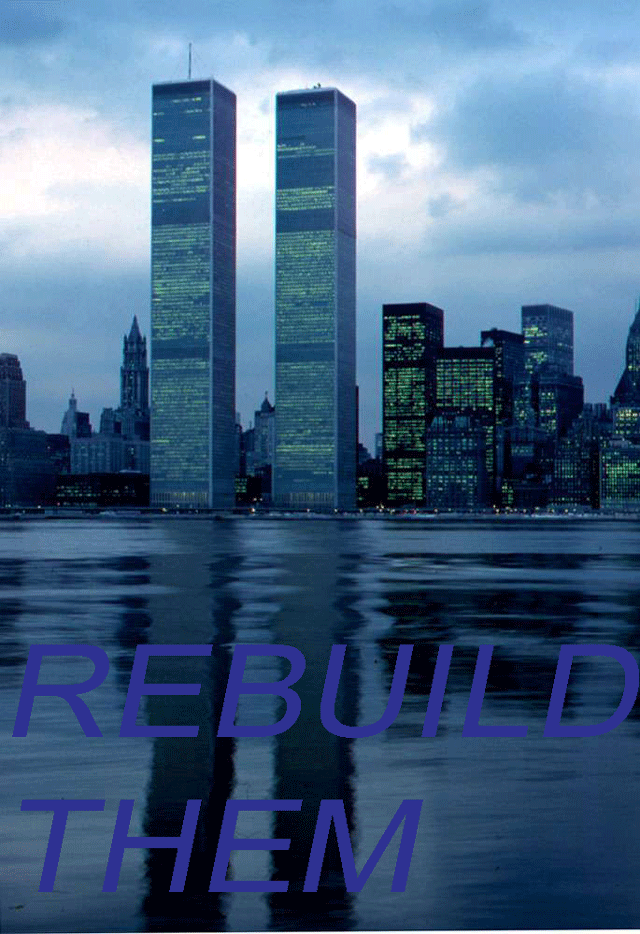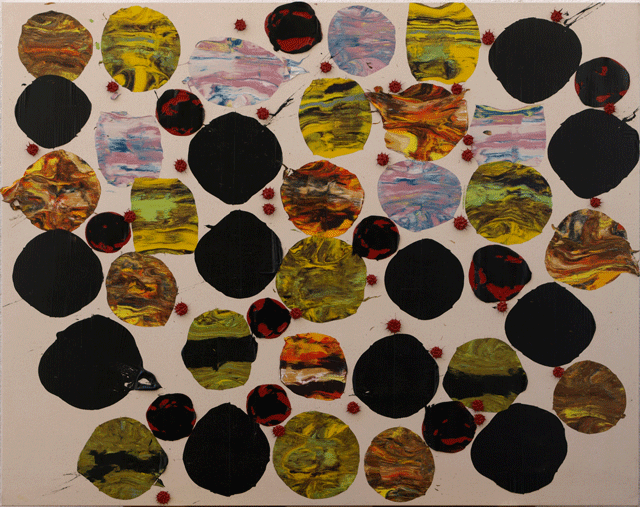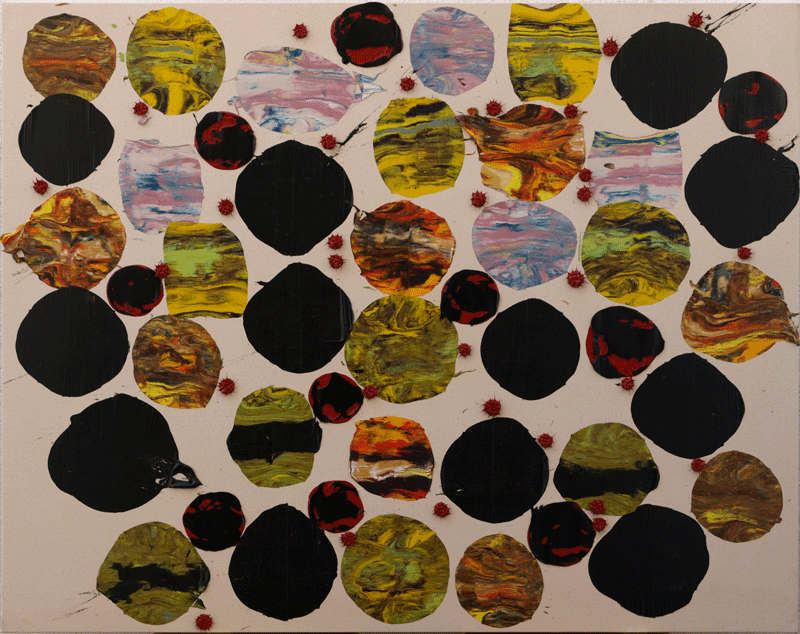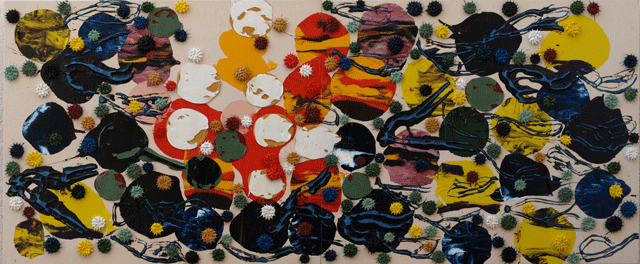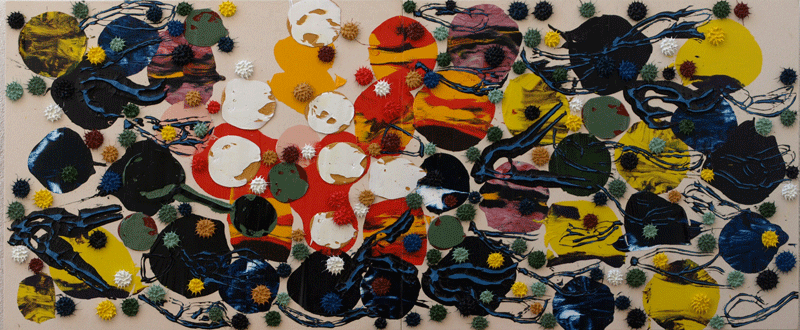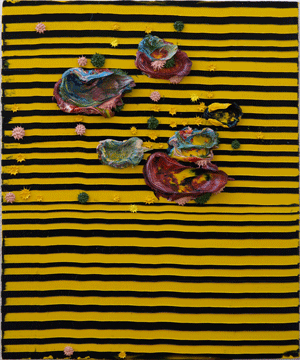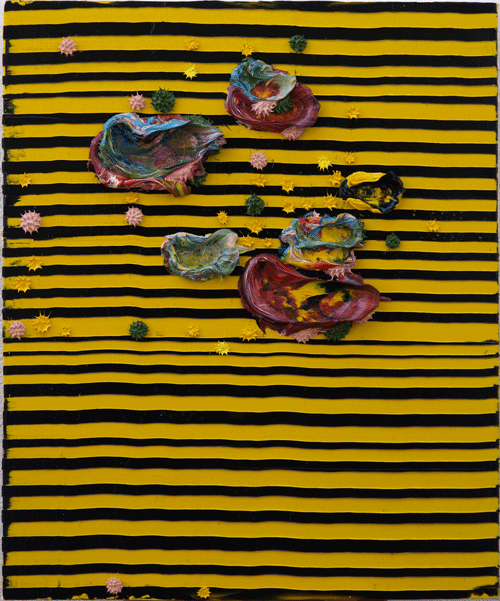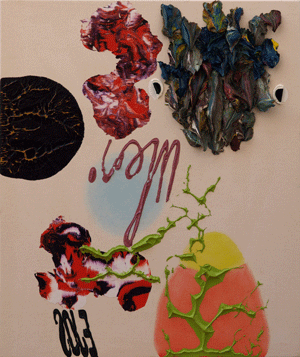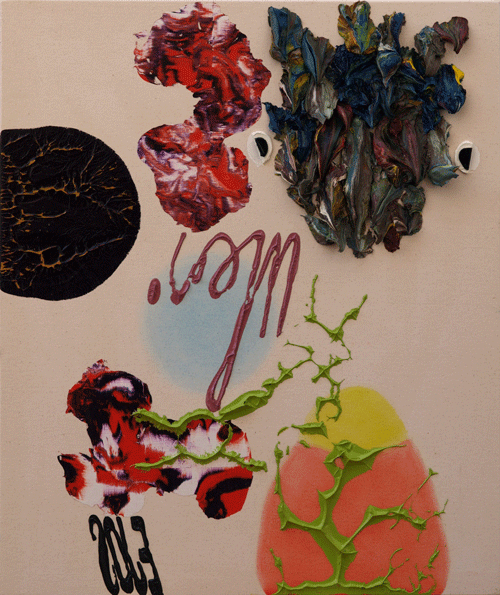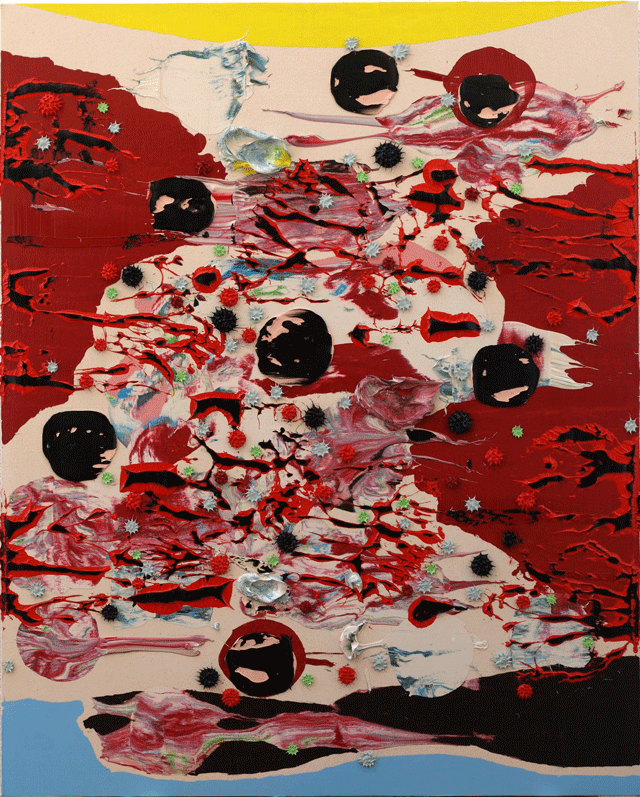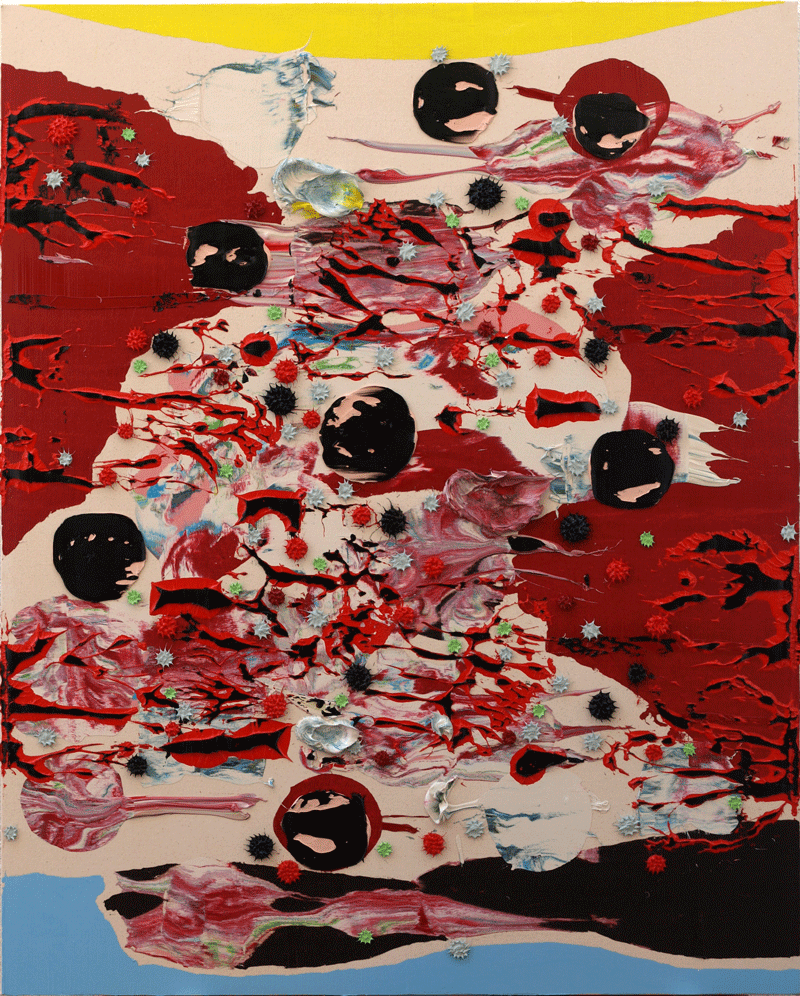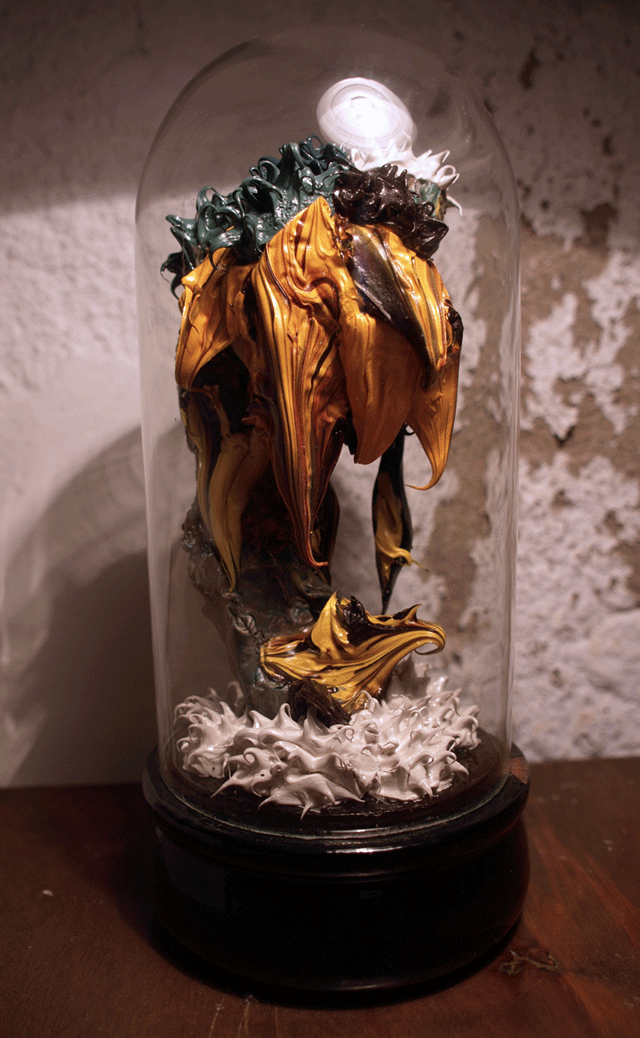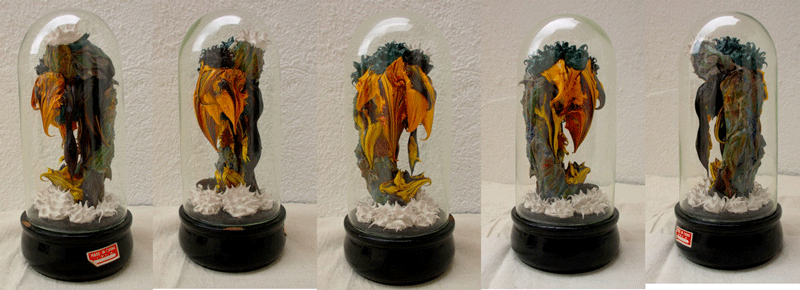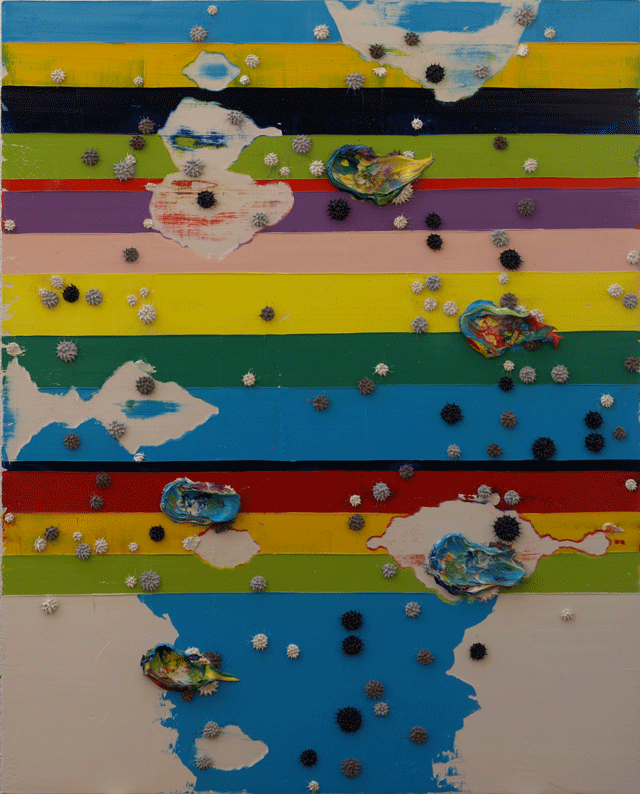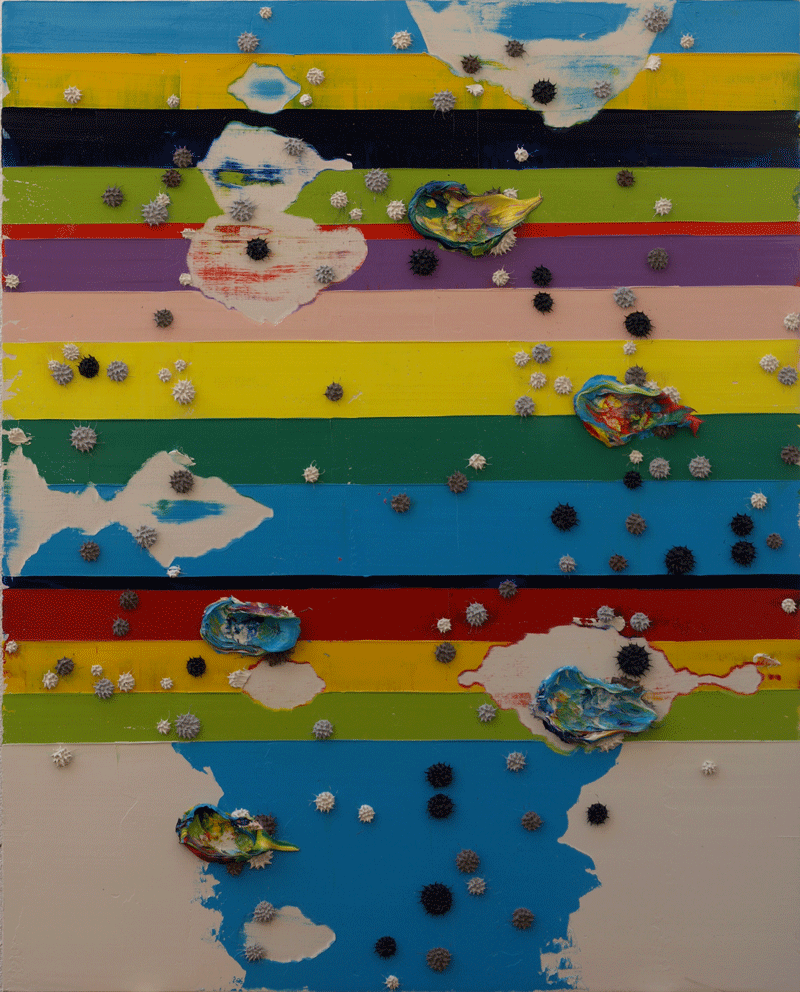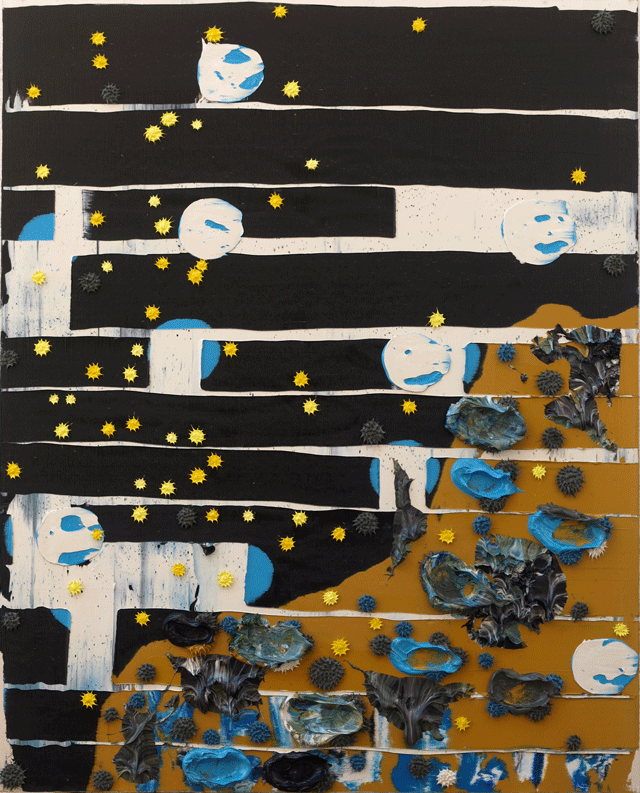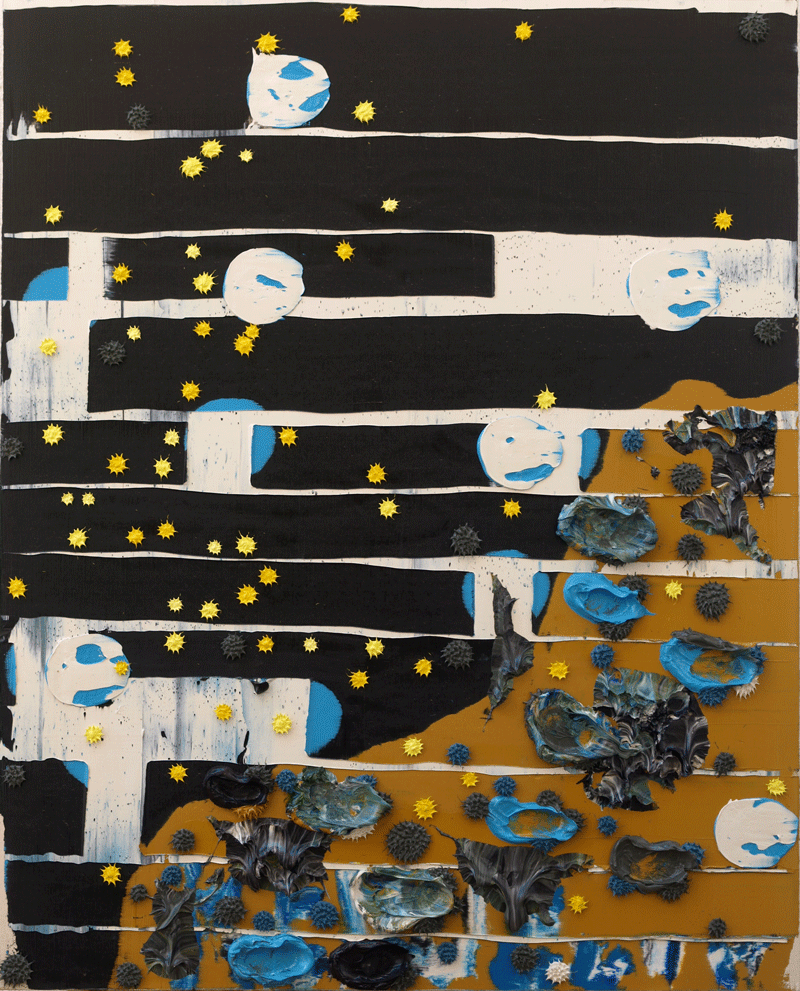September 29, 2010
Art's Not Fair
Highly recommended: Dave Hickey's talk at The Smithsonian.
(BLOGPOST IN PROGRESS: This post is a monster and I am only beginning to sing the aria. There's no time yet to dress it out, as I am about to make my move into my new studio, three days of hustle... but I shall return and finish the job asap. The best part is yet to come.)
I came to it via these series of links: Modern Kicks, Art Fag City and simplepoise.Dave Hickey disdains groupthink, as the introduction goes, and that's putting it lightly. His critique is of unction, piety, hubris; people like Hickey are just what an art world who doesn't want him needs. His talk is a train of gored oxen: ethnic categories, sexual politics, the sanctity of the artist's biography, all institutions from universities to museums, the very idea of fairness itself. As can be seen in the interesting debate about his speech at simpleposie back in the beginning of this summer; for the more politically correct among us, he fits the profile of a misogynist. Signals abound: suspicious allegories of Raoul and Cynthia (the dynamite of race and sex); references to institutional players as "ninnies", artists as misfits and idiots; his disregard for the supposed efficacy of art school; his very existence as a white male Texan; his conception of American Exceptionalism; the form of arguments that while they are vested with what appears to be Marxian economic analysis, they are actually articulating a Hayakian or Adam Smithian worldview... all of this and more are solid indicators of the "other" of the intellectual elite including those who aspire to this designation. In the debate at simplepoise, interlocuter "JT" balances the scales with a defense against this accusation, although this vindication ends with a replacement of the designation of "creepy" and a slurry of slurs about his physical presence. It must not have helped matters much that during his speech, Hickey reopened what must be a chin nick from his razor and subsequently punctuated his talk in a humanizing, elegant way with an inelegant preoccupation with staunching the flow of blood.
His argument might at first appear to denigrate artists but it can be seen that he does this in order to finally praise them. The finest praise of all:
Because one of the problems with artist is that they have, like, moral principals. They are involved in a vocation where they have taken an oath to be free. They have taken an oath to have contempt to their peers to get up on the front of the wave in the absolute pretense of invulnerability, all these fragile people in the dark, pretending to be invulnerable...
Elegiac.
He wants the institutional world to dial it down, at least to see that their efforts in the art present distort art history, perhaps his message is a plea for the institutional realm to restrict their roles to an anthropological level by only documenting art that has lived and passed. By earnestly saying that "...artists can take care of themselves", he seems to believe that artists will sort themselves out in their own ways (with an internal negotiation of quality?), that "...we don't need no stinking badges!", that the multitudinous marketplace of granular assessments and negotiations of aesthetic value cannot be anticipated or replaced by a committee of any design.
Hickey sees postwar art as a strategy to prevent the downfall of the cresting American moment, the moment when the dominant object, aka high water modernism, won for America the identity of the avant-garde. When the institutions overlaid the new pecking order, they democratized the definition of art and watered down the threat of quality. The post-dominant art object turned the focus onto the biography of the artist, for the sake of the mass nurture of a gazillion artists, to open more doors into the walls that circumscribed quality... But he cautions with a quotation: "Nothing is more commonplace than the wish to be remarkable."
Democracy and particularly American democracy is fundamentally different from the world of art, incompatible, harmful even. His argument is striking: that at the institutional level, the less done for art, the better for it. His whole bit in reference to James Madison's Federalist 10 about failing by faction is that art thrives in a city but chokes in a village, that the multitude of communities will be domesticated to a fault in an overly institutional art world. Even the internet is implicated:
"Now motorcycle gangs have websites, couture has websites, so we reorganize ourselves into a nasty little mediterranean republic that will collapse of its own organization. And it?s all communitaze, because what we have done is turned the city, the vast city of the world into a village. And if it?s anything culture needs it?s not a village."
By this, he is saying that factions are prone to internecine failure. Is the internet diversely rich or does it ultimately radiate a homogenizing tendency? As is typical for my appreciation for Dave hickey's work, the contrapposto of his arguments is magnificent but the lean tends to come from small failures due to logical inconsistencies that lie outside of irony's saving grace. Is the internet diversely rich or does it ultimately radiate a homogenizing tendency? Aren't factions, communities in other words? Isn't it a longtime Hickeyian idea that an artist should have his/her own party, meaning: form one's own community rather than seek out an existing one to enlist in? Wasn't the early modern and postmodern art world a village? Isn't our city of an art world -meaning: a collection of communities so large that one cannot know them all- a recent phenomena?
Dave Hickey is providing us with his account of recent art history as he attempts to reposition the artist in what he seems to regard as the natural social order. Like Rousseau, he sports a creation story. He provides an allegory of The Beginning of the Art World: a glass of wine and an argument over preferences. Like Rousseau, he has a hard critique against (institutional) society, and a high regard for Natural Man, our imagined idyllic state in a land of plenty before we lived in concentrations large enough to compel the formation of society and the social structures needed to manage the ownership of property. To paraphrase him as best as I can on the fly:
"It's about jazz, rock and roll, surfing, rodeo, a place where everyone is assumed to be fucked up, a place where no one would dare get their feelings hurt, because this was about art... it doesn't matter to the artist who made the art. Who made the art doesn't matter in this environment."
In this natural social order, art is antithetical to democracy. Art is elitist, it tends toward the singularity of preeminence, as fugitive as it might be. Natural Man, like the Natural Artist, walks alone flying his/her freak flag in a land with plenty of elbow room. He invokes Madison again with "Genius is an accident but mediocrity is the rule." He tends to take the two poles to be absolute. A sympathetic reader must suspend disbelief in order to entertain the argument proffered. All arguments employ artifice, this is inescapable and a bit of wisdom lies therein. But look at how he ignores the possibility that there might be gradation between the two. Gradations can be ladders and Hickey is telling us in this lecture that ladders are a lie. Therefore art school is a lie... and who among us in my art world hasn't made a home for that particular thought? But to take the Hickey train of thought, one has to forget that even geniuses sometimes get better, sometimes get worse. One has to forget that while there is only one Duane Allman, there actually are legions of great musicians and the accidents of G-d abound. Start making your lists and you'll find its an endless task.
This point of view seems to be growing. Have you read Evert Cilliers aka Adam Ash's recent opinion piece Are Our Writers as Lousy as Our Bankers? in 3QD?:
There is a certain kind of art made here in America for a lofty but banal purpose: to enliven the contemporary educated mind.If you read into the article, you'll find that Ash places Damian Hirst on the genius side of the ledger, Koons doesn't make the cut. I'd say it's the other way around.You know: the mind of you and me, dear 3QD reader -- the NPR listener, the New Yorker reader, the English major, the filmgoer who laps up subtitles, the gallery-goer who can tell a Koons from a Hirst.
This art is superior to the cascading pile of blockbuster kitsch-dreck-crap that passes for pop culture, but only superior by a few pips.
This art sure ain't Picasso, or Joyce, or Rossellini, or the Beatles, or even Sondheim. It's more Woody Allen than Ingmar Bergman, more Joyce Carol Oates than James Joyce, more Jeff Koons than Duchamp, more Arcade Fire than the Beatles.
It does not expand the borders of art or wreck the tyranny of the possible or enlarge our hungry little minds.
It is art of the day to inform the conversation of the day by the people of the day who need to be reassured that their taste is a little more elevated than that of the woman on the subway reading Nora Roberts.
For want of a better label, here's a suggested honorific for this kind of art:
Urban Intellectual Fodder.
The pike of Hickey's argument is that genius is an accident and by this the artist lives by the grace of G-d, happy to dwell in oblivion. You've either got it or you don't, and in this world the sad thing is that there are a lot of dead-artists-walking. Poseurs without a clue. Postmodernism is for Hickey, a fall from grace, a societal (institutional) overgrowth, a european invasion that supplanted the dominant object with an anti-materialist social democracy. Paganism, in his words. His Hail Mary pass is an entreaty for the institutional world to leave the living art world well enough alone. "American institutions level things out. They cannot help. They want things to be fair, not to generate quality... There ought to be a refuge( for art) in America from America. Do you understand? There ought to be a place where the press ignores. We don't have to put all our children in silver balloons... Art can rescue us from that world (of leveled democracy)... I. You. Want. To. Be. Rescued."
He might as well ask the lions to refrain from eating the Christians.
By the way, did you catch the ballon boy reference? What an indictment of our overgrown institutional/information age that produces fruit such as Richard and Mayumi Heene.
Someone by the name of Mary Judge, who must have listened to Hickey's talk, sent in a question to Jerry Saltz recently in NY Mag.com's Vulture section:
Dear Jerry,Dave Hickey said, "Start at the top, cause there is no ladder." True or false?
Mary Judge
Dear Mary,
I know and revere critic-cowboy-philosopher Dave Hickey. Hickey is a renegade shaman-metaphysician living on the edge of the art world in the desert (I hear he?s leaving Las Vegas and moving to Albuquerque to teach). He?s our Keith Richards and Emerson rolled into one ? our man in black. I have to disagree with him on this one, however. These days the art world is so big and comprised of so many people doing so many different things, with no established hierarchy of isms, styles, museums, or pecking order of artists, that there is no ?top? anymore. Now the art world is more of an amorphous cloud ? something that changes shapes, expands, contracts, appears, and disappears.
An art world so hyper-developed that it fell from grace, cloud hidden, whereabouts unknown? Or an art world occluded or colonized by a false, meritocratic-driven avatar, an impostor? Saltz' and Hickey's accounts of art history are two of a blossom that seems to be growing. We seem to be living in a time when people are finally asking the difficult question of whether recent art history has a pattern to it or not. Are we living in a post historical time, another end of history, or perhaps the final end of history?
But... when history is over, so is art.
Earlier this Spring, Platypus published an interview with Hal Foster by Bret Schneider and Omair Hussain:
Hal Foster is a prominent critic and art historian who contributes regularly to Artforum, New Left Review, and The Nation. He is also an editor of October. In the fall of 2009, he sent out a questionnaire to 70 critics and curators, asking them what ?contemporary? means today. Foster notes that the term ?contemporary? is not new, but that ?What is new is the sense that, in its very heterogeneity, much present practice seems to float free of historical determination, conceptual definition, and critical judgment.? 35 critics and historians attempted to answer to the problems implied in this observation.
(Foster's initial questions can be read here, both links are well worth reading.)
Here is a summary of the responses:
Grant Kester (historian): the contemporary emerged when it was problematized by a shrinking world: cultural confrontation.James Elkins (theorist): the contemporary is outside of history.
Miwon Kwon (art critic ): the contemporary is distributed into several subcultures.
Joshua Shannon (historian): "We might wonder whether a discipline too long afraid of the present has now become besotted with it."
Richard Meyer (theorist): contemporary history is an oxymoron.
Pamela Lee (scholar): the paradox of pin pointing the moment the present becomes past.
Mark Godfrey (curator): the postmodern era might prohibit successor eras.
Terry Smith (historian): the monstrous hyperpower juggernaut won't let us connect the dots!
Alex Alberro (historian): we are witnessing the emergence of a new technological imaginary.
(quotable: "the real is so mind-boggling that it is easier to comprehend by analogy")Tim Griffin (editor): the notion of the contemporary is vulnerable to spontaneous niching, a paradox of distinction and branding.
Yates McKee (critic): resist branding.
T. J. Demos (historian): a loss of criticality is patronizing. Close the distance and you might find that generalizing is problematic.
Kelly Baum (curator): heterogeneity signals possibility.
Rachel Haidu (historian): the question is narcissistic.
(quotable: I think what we are seeing today is art miming its context. I think we are witnessing art performing ?agonism,? ?disaggregation,? and ?particularization.? Heterogeneity isn?t just contemporary art?s condition, in other words; it is its subject as well.)
(quotable: Why?other than for the narcissistic pleasures related to knowing?do we want a relationship to history?)
The results:
the contemporary is problematic: 12
the horizon is bright: 2
historians: 6
theorists: 2
critics: 2
scholars: 1
editors: 1
artists: 0
Aporia or can we see figures in the clouds? Impasse, puzzlement, doubt, & confusion as a permanent, emergent condition? The debate has just opened. Round and round, people are finally asking the important questions: where are we, where were we and where are we going?
What happens when you ask artists these questions? Over the summer, I listened to podcasts in the studio. A lot of them. One of them was the Bad at Sports Episode 245: Painters Painting at Apex Art, a panel discussion. Here's the intro:
Painter and Bad @ Sports NYC correspondent, Tom Sanford will moderate a panel of 5 other painters who will talk about painting. Kamrooz Aram, Holly Coulis, David Humphrey, Dike Blair and Deborah Kass not only represent three or four generations of New York painters and are all prominent voices among their cohort, but also represent a wide variety of approaches to the medium.To my ear, they were ultimately talking about the same issue: Where have we been? Where to go next?These, ?the Painters of Painting?, will discuss the current concerns in painting as well as painting?s enduring relevance as a humanistic and idiosyncratic antidote to the prevailing corporate culture of consensus and commodification.
Here are a few notes I made along the way, trying to record by paraphrase and comment briefly on what was said:
Time: 47:00(A mismash of history, art and world and political history the question of position of painting in contemporary art.)
The time for consensus is so far gone...Tom wants to raise the stakes...
You want it to create a challenge...
Painting was critically marginalized by postmodernism..
But we did it anyway...
We were one of those people that deveolped those postmodern theories to counter a stringent modernism and all those rules... and what came of this of course was another set of rules... and now we are post-that...
"those rules"
They talk about the Frankfurt School: Tom's description: the autonomy of production, the work as a stand alone thing that has its own conditions of order sense a fictional elsewhere emerges from a solitude that is in itself a form of reistance an inconvienience to mass culture
depictions as picture fictions a fulfillment of the idea
(his definition of the Frankfurt school is a lowering the stakes)
that art constitutes itself as an autonomous realm whose fictional elsewhere character is a form of resistance.... Being an artist is a radical thing to be... if you are an artist, do your thing... that's enough to be radical
a challenge:
I don't kmow what's radical anymore,,we all get sucked into the capitalist scheme but then so what? You're just a person.
You just work for yourself, its really good...
(an artist in the panel) "I feel so guilty and useless being a painter." (friend: "You're not exploiting anybody...")
We're all having a guilty conscience about living in this consumerist world that's eating itself to death at least we can say, the one thing we can say is that we are not participating too much in that ...unless you end up being incredibly successful and a huge consumer....
(a reference to Richard Prince's lavish life, a citation of an artist who fought the Burmese government -not named-)
(anxiety of social efficacy)
Q&A:
painting as a resistance to mass distribution
(so elite distribution is ok?)
is it possible to innovate in painting?
yes, if it's a new subjectivity, that's new.
no, if you want a new frontier a l? Jackson Pollock (that's a bullshit model)
Pollock, Picasso: formal giants. You can only push against the one who made the "big move". There is no big move left to us.
There is no one to beat. That's the quagmire.
As I initially recorded in my notes, this talk is a mismash of history, art and world and political history. No wonder artists scored zero in the Foster game. But then, is this even our realm? Certainly in the reflective aspect of our productive lives. Artists should not feel inadequate in the face of Foster's company especially since an artist can expect to measure the art of communication in the work of historians, theorists, critics and curators. So yes, this mishmash is worthy of setting on a stage next to Hickey, Saltz and Foster. I see that all are preoccupied with the same issue.
Where were we?
Where are we going?
Well of course I couldn't have written so much, this deep into the blogpost unless I had a card to throw on the table. It's a proposal, a sketch, a hypothesis. It's a desire for a conversation. I've written about it before in this forum. But sometimes you have to repeat things before they can make a dent.
I look at the clouds of art history and I see something that I would like you to consider:
(BLOGPOST IN PROGRESS: This post is a monster and I am only beginning to sing the aria. There's no time yet to dress it out, I am about to make my move into my new studio, three days of hustle... but I shall return and finish the job asap The best part is yet to come.)
September 28, 2010
Ambient Influences
I post info about the shows of my friends in the art world not to promote them (although I am happy for whatever promotional power this blog might have, the degree of which is still a complete mystery to me) but to report significant influences my community has on me as an artist. When I'm talking with my pals, I enjoy their enthusiasm and being thus moved, I feel compelled to include a note of it in this online studio diary.
Here are three recent examples:
Bart Exposito has just returned from a trip to Kansas City for a group show for the Nerman Museum at the Johnson County Community College, curated by Bruce Hartman. His report: the museum is amazing, a great collection distributed throughout the campus and thus well exposed to the public. Bruce Hartman is sharp and a good natured soul, his curatorial history is top shelf. The artists he showed with, Warren Isensee, Stanley Whitney, are equally impressive... Bart described one as resembling Sun Ra with his attire, both are mid career artists who are finally getting the recognition they richly deserve. Kansas City is beautiful, an echo of Chicago, and populated by an enthusiastic community of collectors who are by no means wall flowers in the art world.
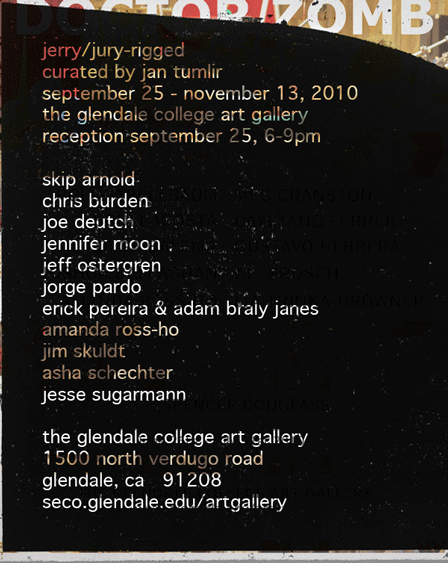
Adam Braly Janes threw in with Eric Pereira at Roger Dickes' Glendale Community College Gallery. Jerry/Jury Rigged. This space has a great history and shows like this extend this reputation strongly into the future. Adam told stories of the different artists installations: Skip Arnold dumping a four foot high pile of dirt into the tiny space, Joe Deutch is an interesting character, Amanda Ross-Ho is someone to watch...
I was doubled up in a fetal position over the weekend due to some kind of respiratory infection (head cold), the first in a long time, and I wished I could have made it to the opening.
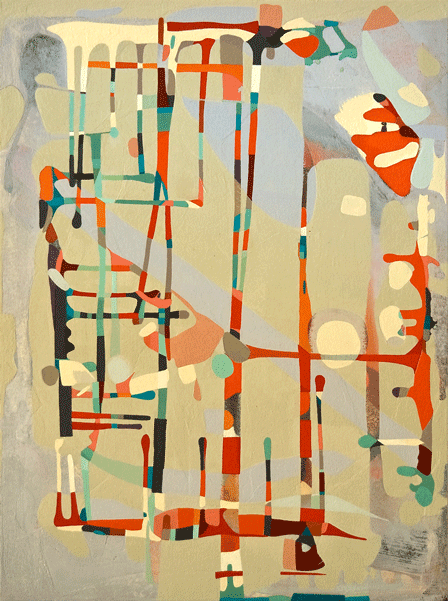
Brad Eberhard has a show of recent paintings at the Thomas Soloman Gallery, specifically Tom's second space at Cottage Home, a former theater around the block at Cottage Home Street. Brad's painting practice is evolving, opening up, looser and larger. A super interesting guy, a polymath with an independent mind, he's like Bart and I: singularly focused on painting and diving deep.
(Yes, I'm flattering myself.)
Tom has another show up that deserves mention. Krysten Cunningham and I don't have an active or natural conversation together, but I watch what she does with interest. Her show is up simultaneous with Brad's, at Tom's primary space on Bernard Street. Titled "3 to 4", it must be the architect in me that keeps my eye on what she is doing.
Henry Taylor | Couch Paintings
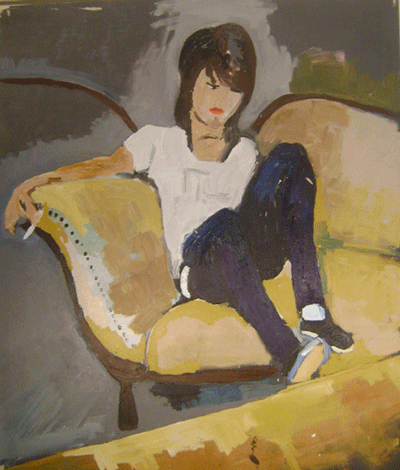
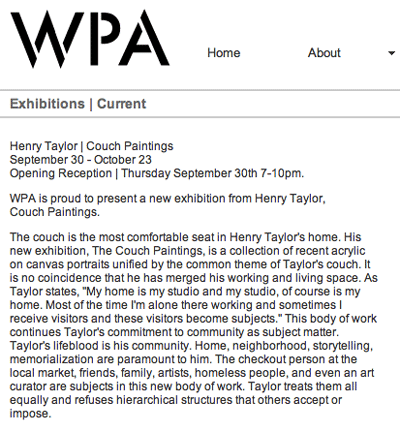
Henry is mounting a show this Thursday at WPA, Couch Paintings.
Read the rest of the press release here.
September 27, 2010
Something's Happening

I'll be moving studios this week. I'll be inhabiting the space where Dan Hug, then Joel Mesler both jointly and separately had their galleries, and most recently Fran?ois Ghebaly, who has relocated successfully to Culver City. Good ch'i. I'll have great company there as my neighbors are WPA and Henry Taylor.
Heeeeeeyyyyyy!
Yes. Henry. Taylor.
That's right.
Yup, that's the one.
The one and the same.
No one else.
Look him up.
That's right.
Henry Taylor.
Do you know what I mean?.
Simmons & Burke at Michael Kohn Gallery
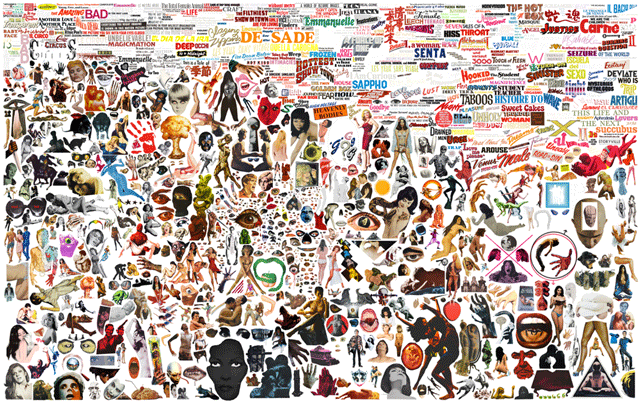
The artistic team known as Simmons & Burke just opened their show at Michael Kohn Gallery last week. We are all represented by Michael in Los Angeles, and I am happy -to say the least- to be in proximity with talented folks with something to say. I wanted to lay out a few thoughts that I had about their new work and the installation of their show, the design of which deserves mention, even in this information-aged environment of ours.
This note is just a diaristic scribble, not the normative critical presentation of their work, a proper art review, a premonition of which you can witness in this Wired.com article (fotos of the artists themselves at the link, by the way). To ease the descriptive task a bit, here are the first three paragraphs:
To produce the dense, hypersaturated art pieces seen in their new exhibition, two artists googled the web, scoured fan forums and browsed Flickr accounts to round up 5,000 images for a single collage.Later on in the article, Wired clarifies that what they are culling are both images and audio samples, a point that cannot be sharpened too finely. The intensity of image and audio beg some kind of mapping of one to the other, a task too difficult for my abilities here. But I wonder... is their a synesthesia or somesuch going on? The only way to find out is to hang out for a day or week with the headphones on, eyes agog. Should we expect something like this or bigger from these two artists in the future?The duo, who work under the moniker Simmons & Burke, then assembled their visual plunder into the eye-popping print, pictured above. ?We like the idea of making a Frankensteinian world that is both overwhelming and quieting,? Case Simmons and Andrew Burke told Wired.com in an e-mail interview.
For their new exhibition If Not Winter, which goes on display Thursday at Michael Kohn Gallery in Los Angeles, the pair appropriated about 15,000 images from a vast trove of sources. ?We use all sorts of sites and forums to discover images and samples on the internet,? they said.
All positive adjectival attributions are well deserved of course, but what I want to focus on in this blogpost is the design of their show. The image above is titled "B-Movie Palette", a work that I thought would be best to lead this blogpost. The piece is mounted on the left as you enter the first room of the gallery, and I think it is a sort of skeleton key to their current state of evolution of their collaborative project.

The work occluded above is is titled "If Not, Summer". That two people are silhouetted in the foto above is a happy accident for this blogpost because the first image arranged in the show is of an image of a human figure cut out, revealing a red-orange background, making strange a foreground resembling mud or clay. It is positioned immediately to the right as you enter the gallery. This piece is small, modest, tucked away... but yet a prime signal of the artists intentions. It is a primeval act of collage in arrest after the first cut. It is a pirate flag. Is it also the bite of the apple before the fall? It must be the redness of the show that curries this association for me.

The panorama above tells the story... and if it doesn't, the image of the gallery model below should lay it all out nicely. What we have here are two rooms, the central one is crowned with "If Not Summer" in three parts, something like a triptych splayed apart. Diptychs and triptychs bring my mind to historical European painting, specificallythe Hieronymus Bosch room at the Museo del Prado in Madrid.
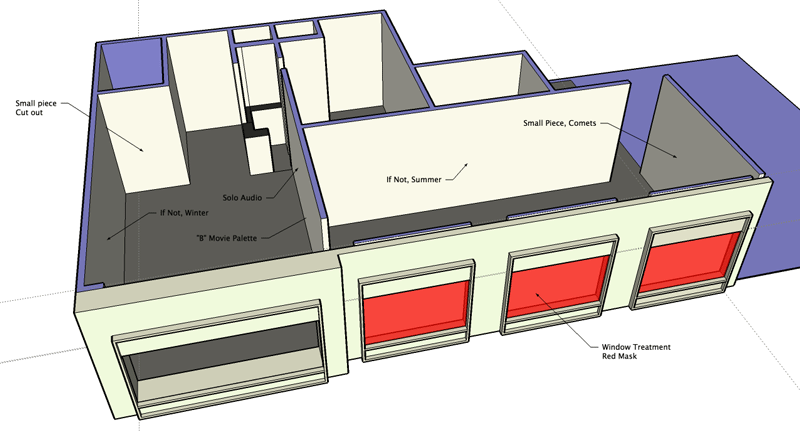
In terms of the design of the show, the position of "B-Movie Pallette" and the small figure cut out (I don't have the title on hand as of this writing) tells us that Case and Andrew are widening their public offerings to include aspects of their medium that normally swept away as they mount their "A-Movie" project. Isolating the figure renders shards, heaps of them. Art is about paying attention, and I can identify with their ambition because I too often notice that sometimes the best things in painting are what's left behind on the palette... and the task is to capture them on the stage in which I would want to present as art: the painting proper. In their practice, they normally use an image file that they call a palette in order to corral the images that they cull from the internet. I can imagine that one day as they were combing through their palettes, they must have stopped and said to themselves: "Damn, that's nice."
If you can indulge me dear reader, I'd like to recall an earlier blogpost describing a similar idea discussed in the context of visiting Copenhagen artist Javier Tapia earlier this year (you should check out his site, he has images of his cave installation completed last spring):
Javier took me to visit his studio at the Royal Academy. Several floors of studio spaces were secured by guards and accessed by key punch locks. The warren of working spaces looked like any art school, the good ones. I was dazzled by the breadth of Javier's investigations, by his willful spread into multiple simultaneous media. He had been painting, to be sure, works of facture delivered with a fond disregard. I could identify with the wellsprings of his inspiration in painting: there is a moment when you realize that the best mark is not the one on the canvas but instead left behind on the tool or palette. The trick was to get that particular mark -or anti mark- onto the surface of presentation. What is different between his painting practice and mine was that I tended to domesticate the wild mark, or to find a negotiated position between each, to try to counter-balance both ("through contrast, one becomes conscious")... Javier, by contradistinction, wanted only wildness on his canvases. An interesting proposition!Well, there you go. Three points make a plot.
Redness. This color is a lead actor in their passion play. It brackets the central piece, "If Not, Summer". The windows of the gallery are given a red treatment of adhesive plastic film. Hollywood calls these kind of things, "gels". In the afternoon, the light in the central gallery is flooded with rose colored light. To the left as you enter and before "B-Movie" is a set of headphones and an unspoken invitation to enter aural space. I will have to return to plumb its depths, I cannot describe what that world is like. But this is what is plain to me: the first room and the design of the show in general, the artists' project is splayed, an anatomy lesson, a crucifixion, Rembrandt's flayed cow, Soutine's rotting chicken nailed to a board, blood let and running out. Redness.

On the right as you enter the first room are several pieces co-joined even though they were conceived separably. They are titled "If Not, Winter". They each are -as I understand it- a different kind of collage, or maybe not one at all, a super-superposition of images laid one atop the other. How they are done and what decisions that govern what is hidden and what is permitted to prevail, no one can tell... or then again one can plainly see But what I see with these pieces is an ambition to take collage to someplace strange. This, they have already done with the work that we have come to know. What is impressive is that they are actively seeking other dimensions of it, an art practice called collage brought to a boil, a wringing of something more than information from our own vaunted, notorious age.
September 22, 2010
Ahora
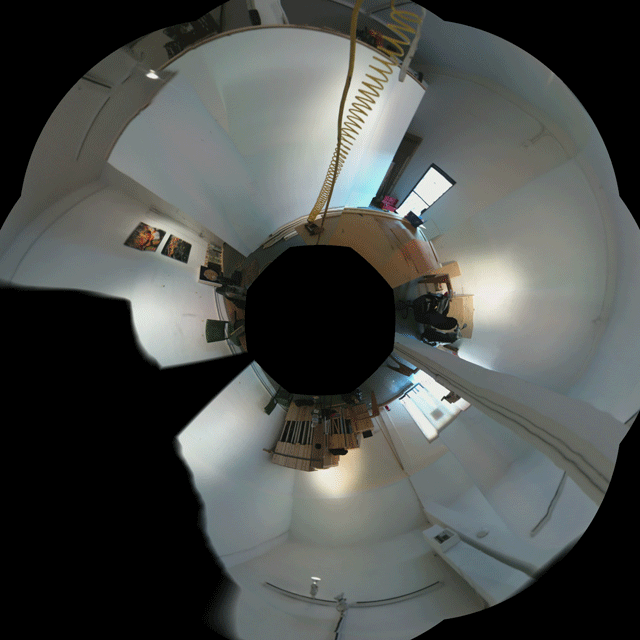
I've been back a week, and the world still seems like it's still whirling about.

September 14, 2010
Cloud Hidden...
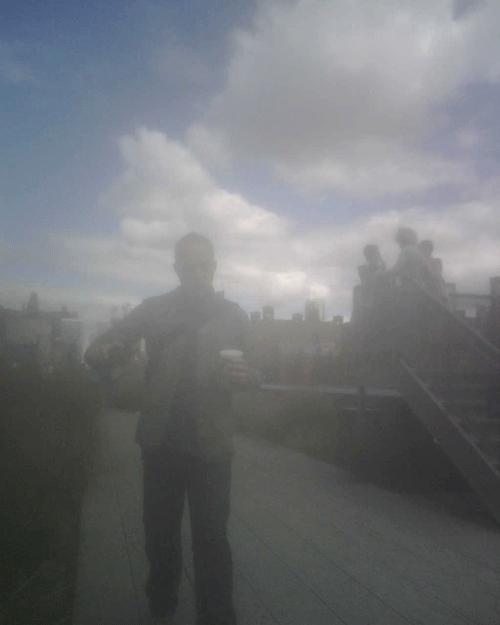
...Whereabouts: The High Line.
(Foto thanks to Doug's amigo and mine, rizzle stein.)
NYC Panoramas II
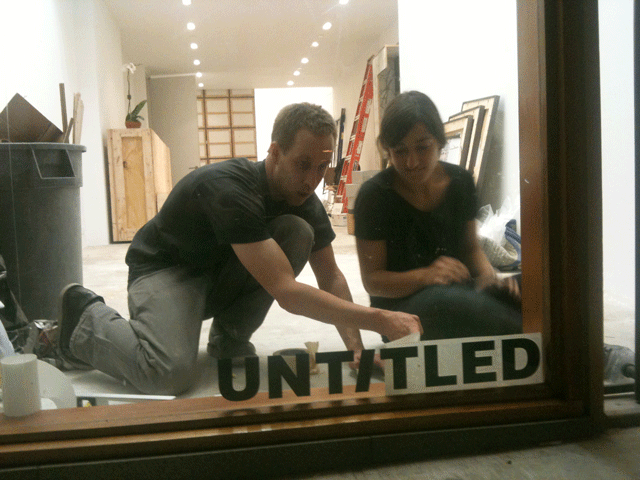
(Before we click under the fold to see the panoramas, here are a few outlier fotos.)
Titling UNT/TLED: Phil Wagner (artist) and Carol Cohen (co-owner of UNT/TLED with Joel Mesler) peel the moniker on the gallery front glass.
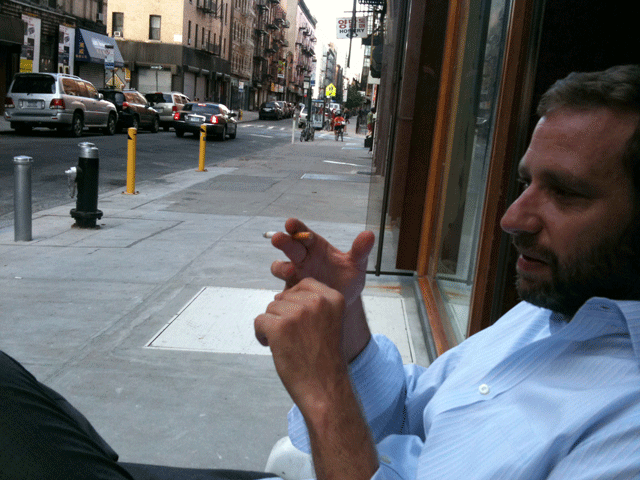
Joel Mesler in the hours before the opening. I can't say he was pensive... but he wasn't relaxed either. That combination sounds about right for the occasion.
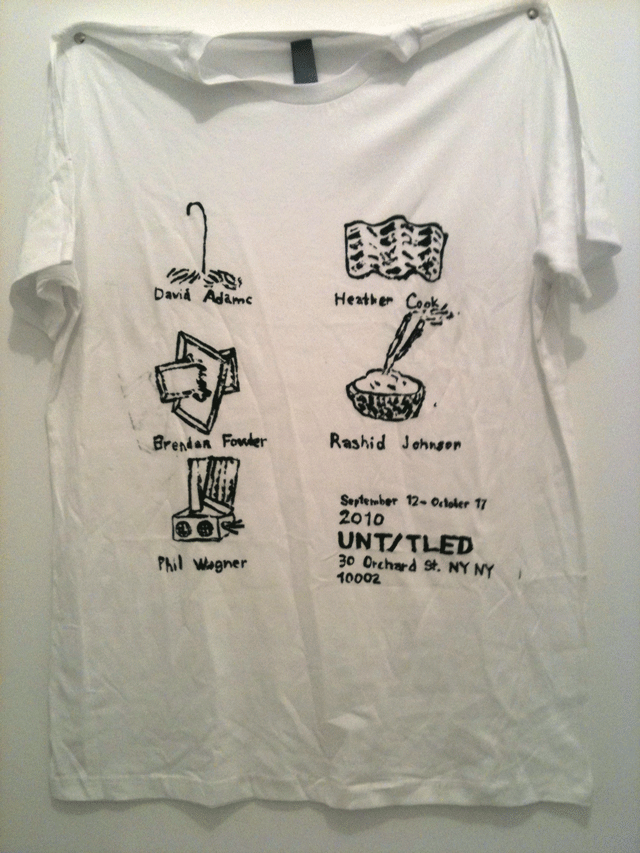
Matt Chambers made a T-shirt for the event. He will have the next show at UNT/TLED, if my memory serves me correctly.

Sunday in the Lower East Side was a cluster of openings, the majority of my pics were of Joel Mesler and Carol Cohen's inaugural of their new space on 30 Orchard Street. My apologies to the other shows in the neighborhood. I was visiting them, guided by Doug Henders, a fast moving stream of events that prevented me from geeking out with my panoramic activities that would have documented the shows otherwise. Notable shows include a strange gallery where you enter through bookcases and Lisa Cooley's gallery who was showing Alex Olson.
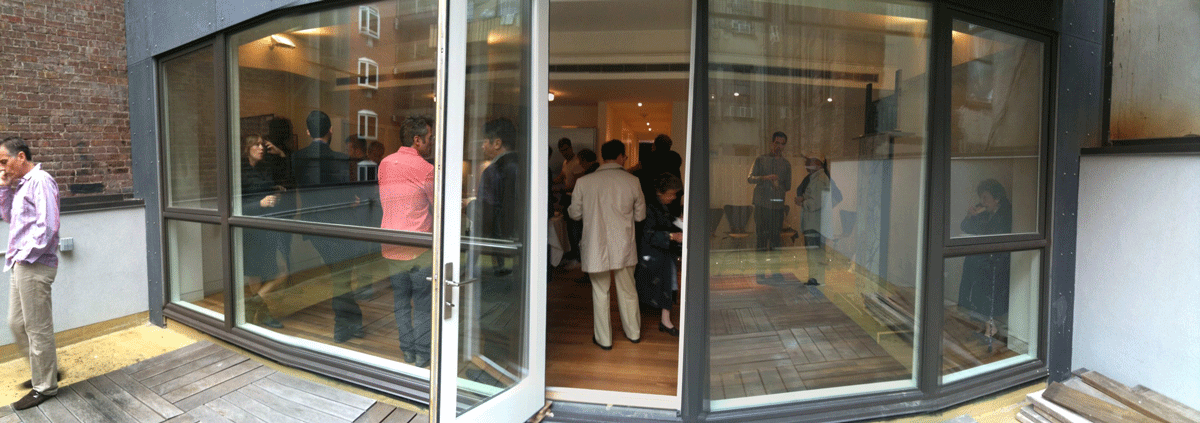
The reception for UNT/TLED was in an apartment above the gallery.
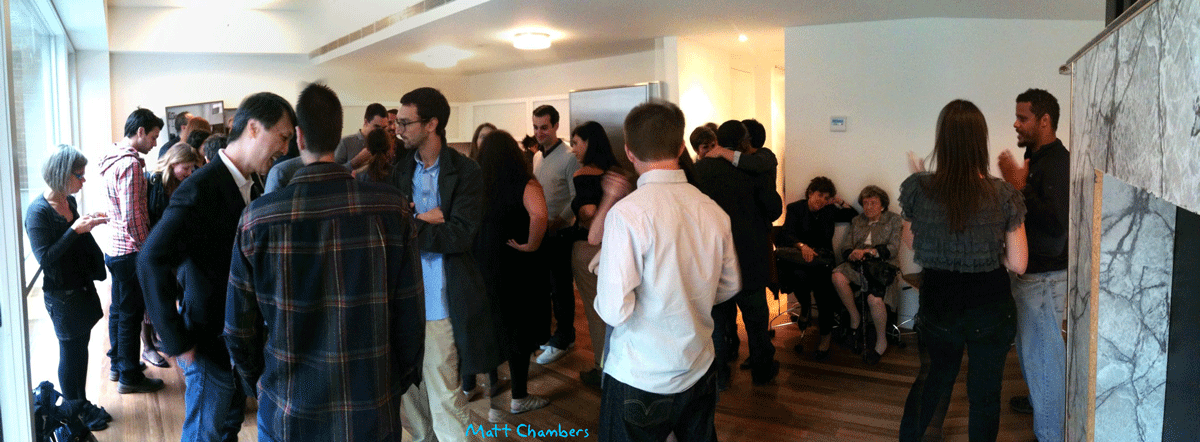



On my way out to the airport, I decided to visit Adam Janes who was installing his show at CUETO Projects.


Ahora
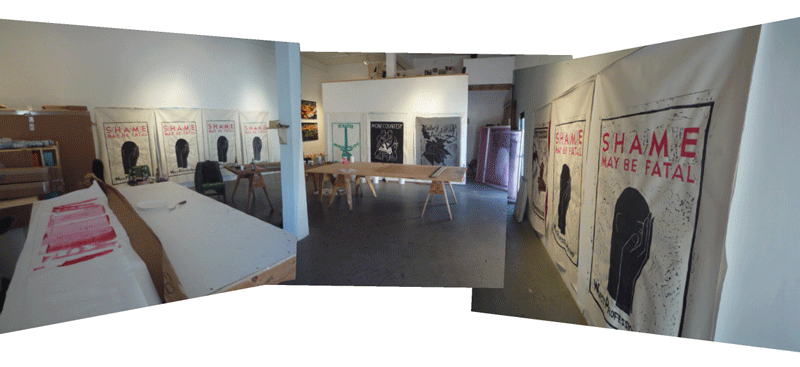
Just got back home, home sweet home.
As you might see, Andrew Hahn has been busy in my studio while I was away. That's my man. It's so awesome to get home to see my friends kicking ass.
September 11, 2010
NYC Panoramas

First night on my arrival: Phil Wagner wrangling his work in the initial install of UNTITLED's inaugural exhibition.

Opening for Patrick Jackson (& Jason Tomme) at Nicole Klagsbrun Gallery in Chelsea.
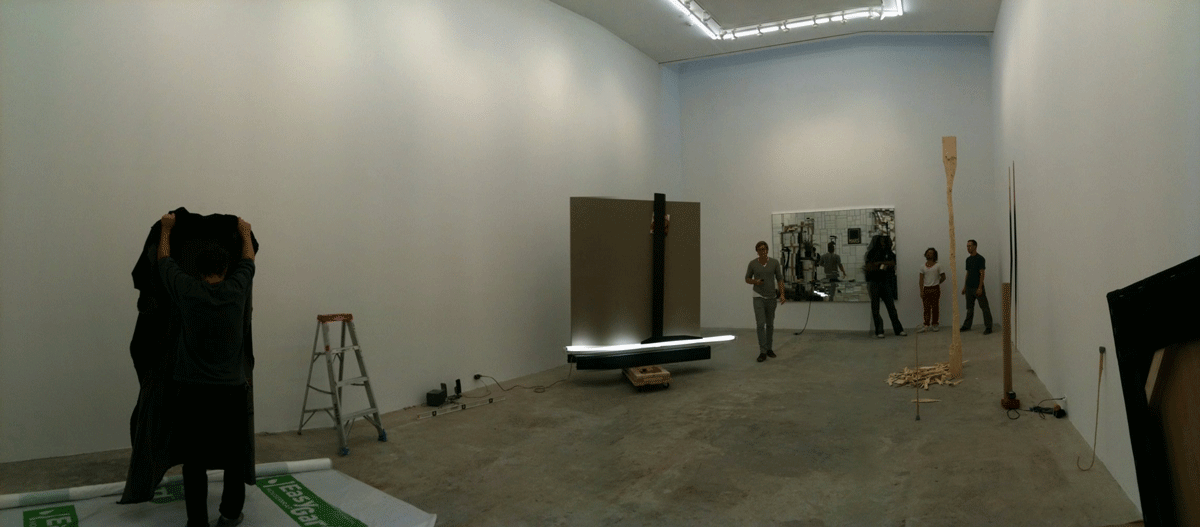
Later in the install process at UNTITLED, three days before the opening. Artists Rashid Johnson, David Adamo, Phil Wagner pictured to the right (Heather Cook, Brendan Fowler are the other two artists in the show).

Adam had just arrived on this day, his crates already popped and he will install his show that will open next weekend. Tomorrow, more materials will be delivered and he will be at CUETO Projects all week pulling his exhibition together.
September 10, 2010
Something's Happening
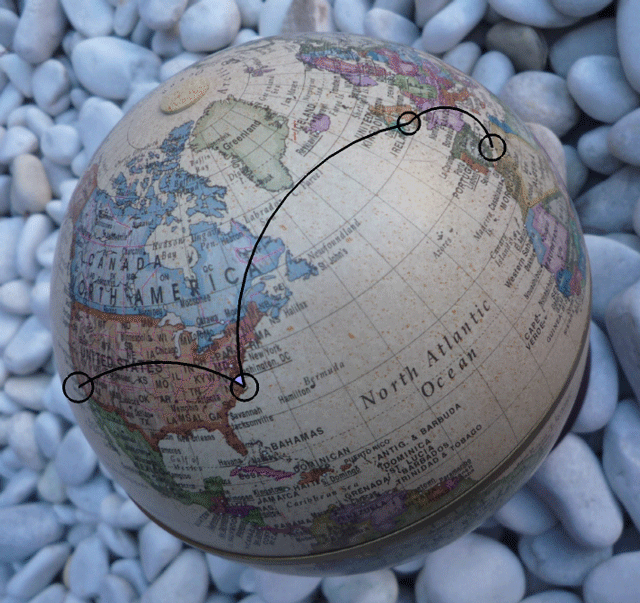
I'm traveling back home to Los Angeles, by way of New York to celebrate the opening of Joel Mesler's and Carol Cohen's new gallery, UNTITLED at 30 Orchard Street in the Lower East Side. the first show will feature David Adamo, Heather Cook, Brendan Fowler, Rashid Johnson, Phil Wagner.
Also, Adam Janes is installing a show at CUETO PROJECT that will open next week. It will be fun to drop in as he begins his install.
And tonight there will be an opening at my gallery, Nicole Klagsbrun: Patrick Jackson's Tchotchke Stacks and in the Project Room: Jason Tomme's
Paper Lead Poem.
See you there?
September 7, 2010
THE VINTAGENT
To follow up on the last post on Patrick Alier's Montesa Comando 175, I wanted to relay a couple of links and a great site to any readers who might be interested. I've been following THE VINTAGENT for some time now, a simultaneously smart and bad-ass blog covering vintage motorcycles.
The video headlining this missive is from THE VINTAGENT's blogpost: Cocteau, Orpheus and Motorcycles, I highly recommend clicking through to YouTube and watching all ten parts of it. Very interesting.
"Interpret it as you wish."
I also recommend the most recent VINTAGENT post on Hunter S. Thompson.
Illuminating.
Patrick's Montesa Comando 175

My friend Patrick Alier works for LS2 in Barcelona as an industrial designer of motorcycle helmets. He recently showed me his restored Montesa Comando 175. The story of the bike goes deep into the history of 20th Century Barcelona, of how it recuperated its fabled first industrial revolution (textiles) after the disaster of the Civil War and the poverty of the Franco years with the production of motorcycles in an alliance with Japan's Honda corporation. "It's a... pure... Catalan... bike, Dennis! Total Catalan ingenuity! Total.", he said musically in his French accent as we sipped our drinks at Kiko and Lourdes' wedding reception. Patrick told the story with such passion and force that I will not be able to reproduce it here, so let me boot to a cut and paste job from Wikipedia and PhotoShop razzmatazz to simulate for you dear reader what it must have been like to hear Patrick's story from his lips and to see his bike in person:
Montesa was Formed in 1944 by Pedro Permanyer and Francisco Xavier "Paco" Bult?. Their first Montesa prototype was based upon the French Motob?cane models of that time. Permanyer began to produce his own gas engines, which allowed for a new area in motorcycles to be explored and expanded into. Permanyer and Bult? teamed up in Barcelona and created a light-weight motorcycle. This led to the creation of a bike powered by a 95cc two-stroke engine with no rear suspension. Despite some setbacks, they sold 22 of these units in the first year of production. The next year, the partnership focused on production improvements and meeting the growing demand for their bike. As a successor to the previous model, Bult? designed a new 125cc roadster, which was tested in many the trail-type rallies and semi-enduros that were popular in Spain at the time.This model went on to enter the 1951 International Six Days Enduro. The bike was entered in by the factory, being ridden by Bult? and G. Cavestany. In the early 1950s, Montesa entered many races in the 125cc class of road racing. These bikes featured six-speed, bolt on gearboxes, in semi-unit construction, with all gears running on needle-roller bearings. By 1956, these Montesa 125s were very competitive and took second, third and fourth places in the Ultra-Lightweight race at the Isle of Man TT.
The most successful Montesa street bike of the '50s was the Brio 80, of which more than 12,000 were produced. The success of the Brio and the other models, led to the opening of a new and larger factory in Espluges de Llobregat. The Brio 80 and Brio 90 models contained many new advances, such as moving the carburetor behind the cylinder, and a handbrake. However, a slump in the Spanish economy had forced Permanyer to cut back on the company's racing activities. Permanyer wanted to pull out of road racing, but Bult? insisted that they stay in. In May 1958, chief designer Bult? left, taking with him several of Montesa's vital personnel. Permanyer had not only lost the brilliant designer Bult?, but also his 30% share of the company.
Fortunately for both, Spain's economy began to improve. Permanyer promoted the all-around champion motorcyclist Pedro Pi from head test rider to chief development engineer. Leopold Mila was made Technical Director and Permanyer's son Javier, was to be Sports Assistant. Work began right away on designing a brand new all-unit-construction 175cc engine that by 1960, would power the latest Impala sports roadster model. This engine would form the basis of the company's future trials and motocross machines. To promote sales of this model, three Impala's were taken to Africa where they covered over 12,000 miles of terrain, most of it being off-road. Back in Spain, Pi was busy winning the Spanish motocross and road race championships and working on a new 250cc version.
Following its introduction in 1965, the 250 engine would be the cornerstone of the company's future success. Mounted on the new 250 Scorpion scrambler, Pi won the Spanish championship again in 1966 and the similarly engined Sport roadster won the Barcelona 24-hour endurance road race. In 1967 the first Montesa trials models appeared and in 1968 retitled the Cota, Pi won the Spanish Trials Championship. After adding this title to go along with the road race and six motocross titles, he retired from competition to devote his full energy to bike development.
In the decade following, Montesa had unprecedented growth around the World and one has to remember that unlike Bulto's bike, the Bultaco, Montesa only sent a small percentage of its production to the States, concentrating mostly on the European market.
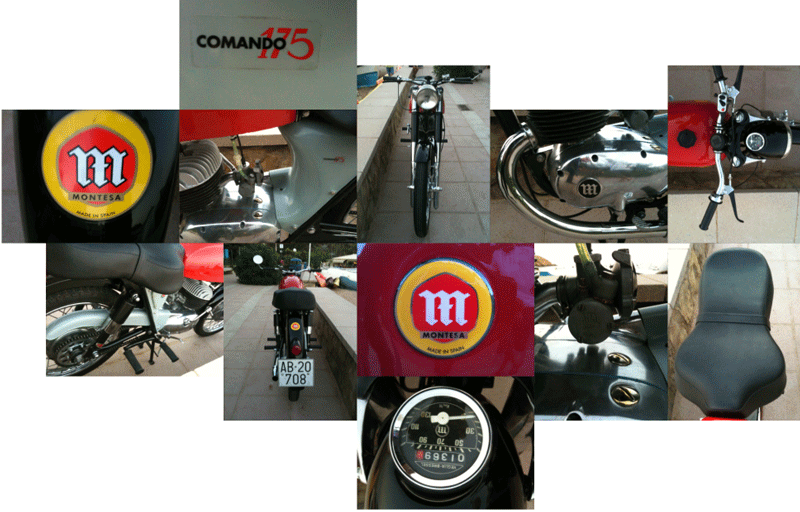
Painting
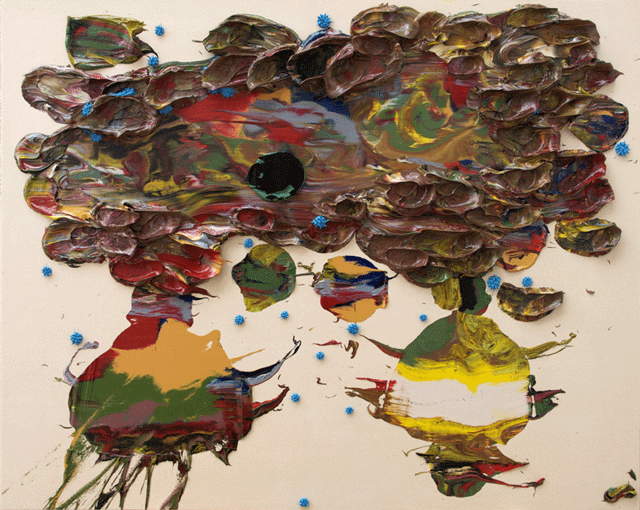
Tu Vu? Fa' L'Americano
#368
2010
50?x63?, 127x160cm
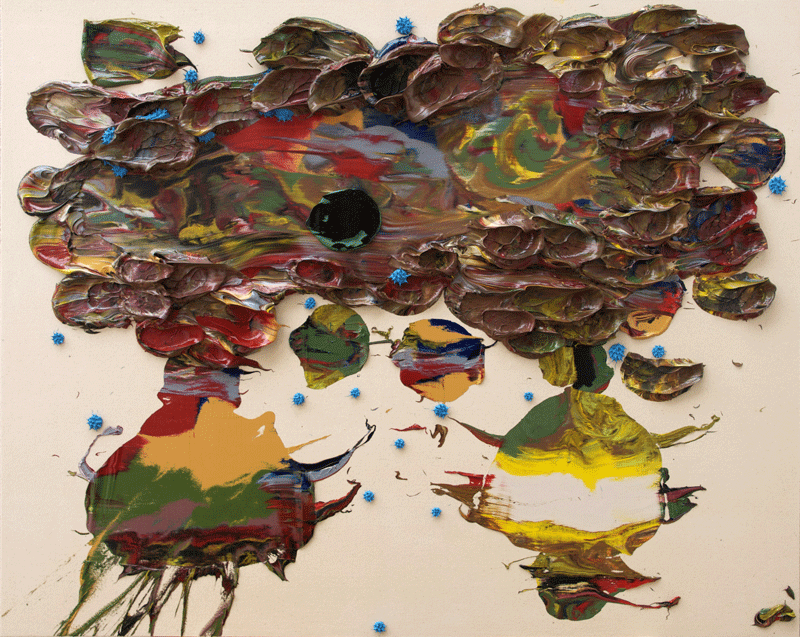
September 5, 2010
Tu Vu? Fa' L'Americano
You're wearing trousers with a tag on the back
and a cap with the visor turned up,
parading around Tuleto
like a bully trying to show off
You're acting all american,
american, american,
listen here: who's asking you to?
You want to be all trendy,
but if you drink "whisky and soda"
you always end up sick!
You're dancing rock and roll,
and playing baseball,
but where'd you get the money
for the Camel cigarettes?
Mummy's handbag!
You're acting all american,
american, american,
but you're born in Italy, listen here:
there's nothing you can do,
ok napoletano?!
You're acting all american,
american, american,
How can your loved one understand
if you're speaking half american?
When you're out loving uder the moon,
where do you get a phrase like "I love you"?
You're acting all american,
american, american,
but you're born in Italy, listen here:
there's nothing you can do,
ok napoletano?!
You're acting all american,
american, american,
...whisky soda e rock and roll
September 4, 2010
Painting
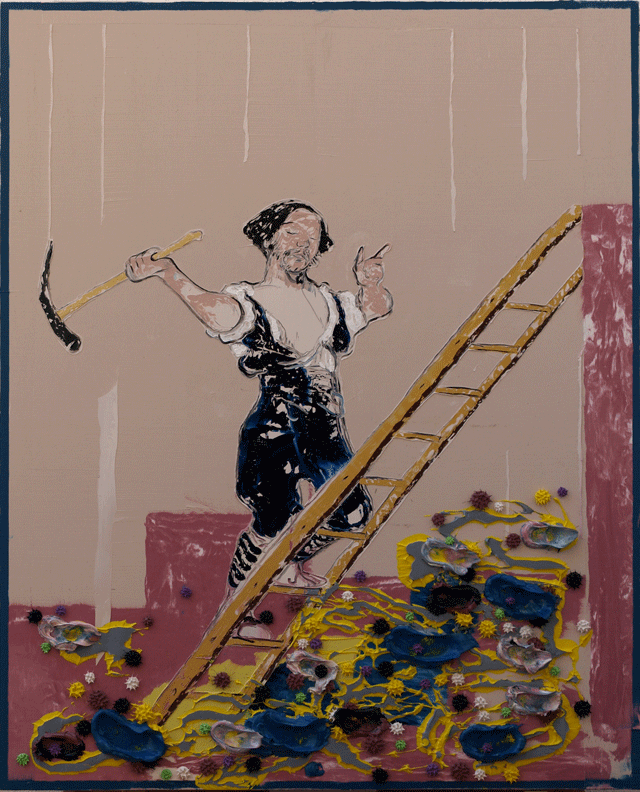
No Sabe Lo Que Hace
#366
2010
63?x50? , 160x127cm
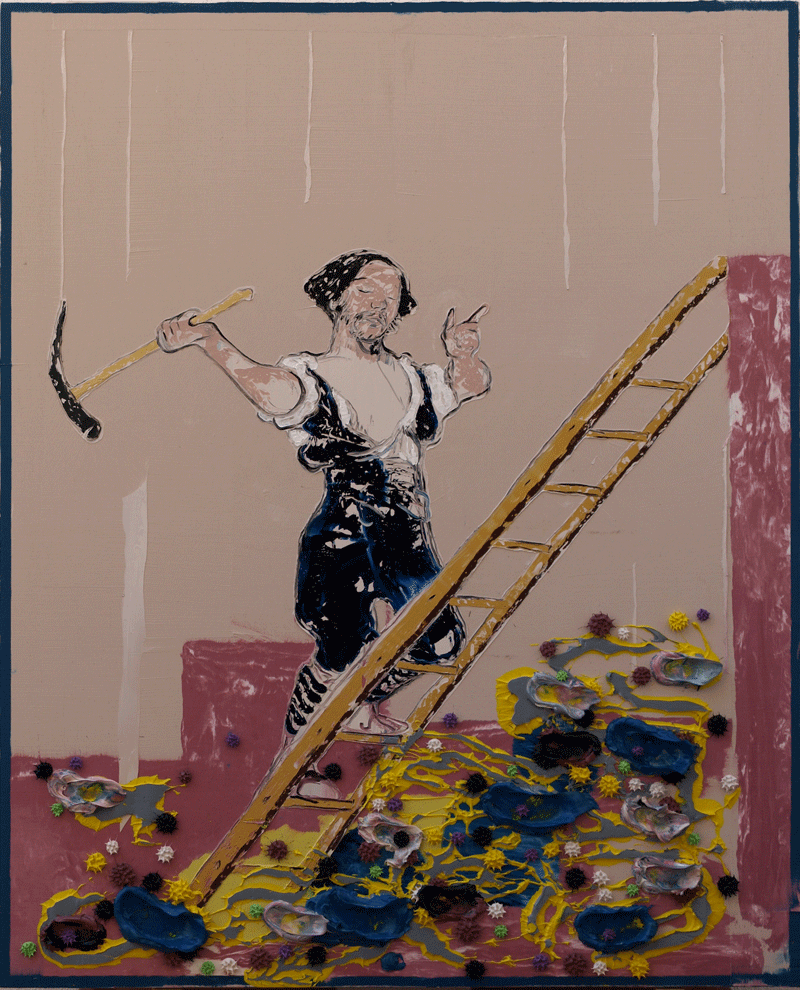
September 3, 2010
September 2, 2010
Painting
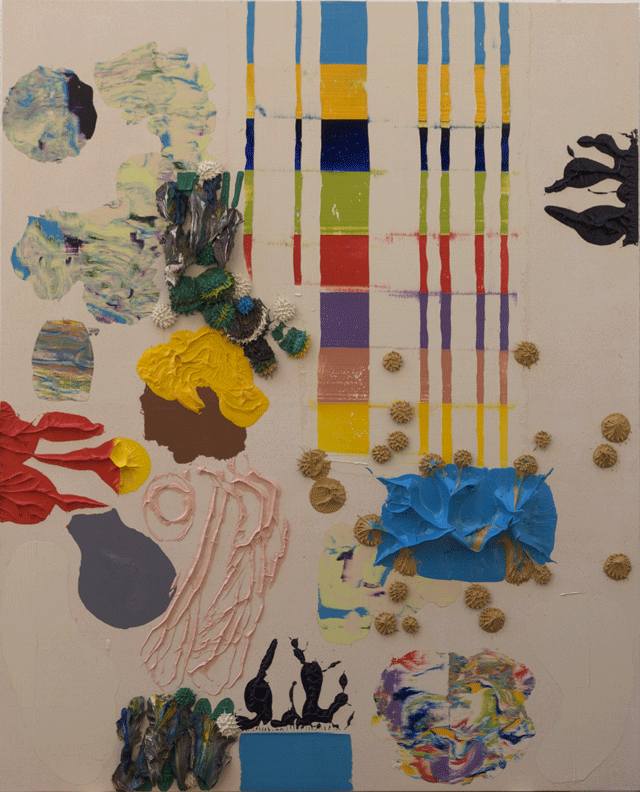
To Be Like It Once Was
#360
2010
63?x50? , 160x127cm
